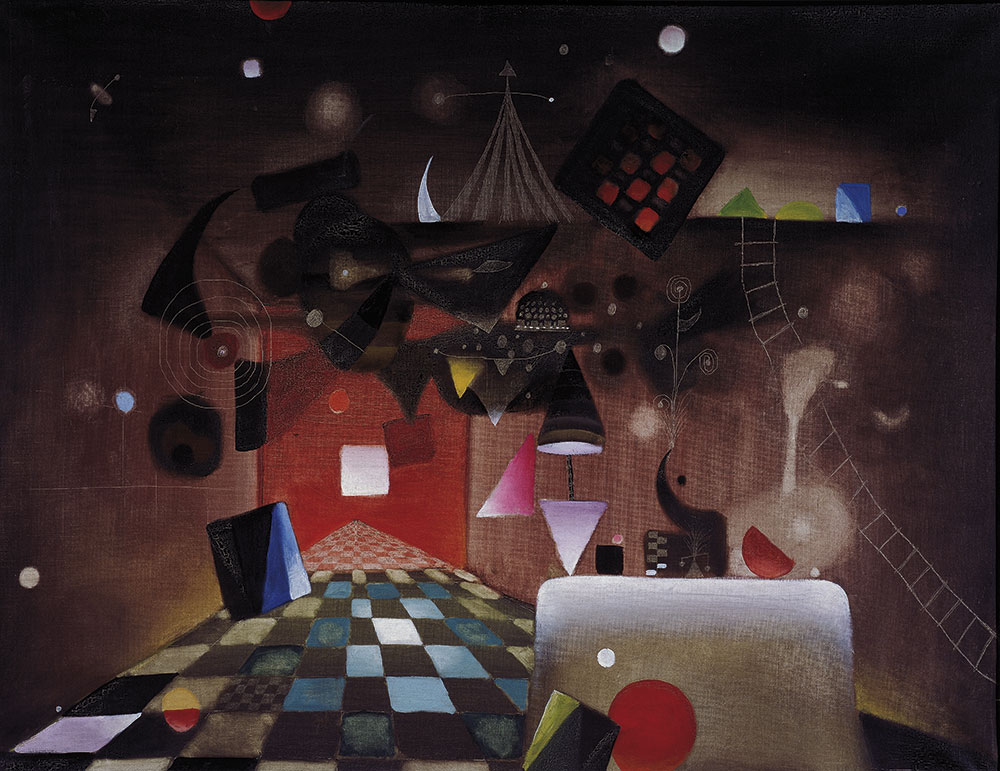Author
Antoni Tàpies
Title
Parafaragamus (Parafaragamus)
Date
1949
Medium
Oil on canvas
Sizes
89 x 116 cm
Register Number
44
Comments
Given how limited his knowledge of art was at the time, his access through Joan Prats to the work of Picasso, Klee, Ernst and, above all, Miró, who at that time was living in Barcelona, was crucial to the development of his work, to such an extent that quite a few years later he still remembered with exactitude which works he had seen in Miró’s studio. (…)
Tàpies discovered the work of Paul Klee one year after that of Miró, and in a 1949 canvas entitled Parafaragamus it can already be observed that alongside characteristically Miró aspects, elements deriving from the art of Klee also appear. We realize that, just like the Swiss artist, he represents a floral element not from without but from within, describing the inner world of the flower in a fantastic way that goes beyond any visual restriction. Similarly, one of the central motifs of Parafaragamus is a checkerboard perspective that alludes to Klee’s painting. In this as in other works, like Klee, Tàpies superimposes flat, triangular and square forms onto a three-dimensional background; that is, painting is conceived as both surface and depth.(…)
As in the case of so many works from this period, the title Parafaragamus was suggested to Tàpies by the poet Joan Brossa, whose dramatic work was also influenced by Miró. Without any doubt whatsoever, during the years of Tàpies’ so-called Surrealist period, a certain symbiosis was established between the painter and the poet, who exercised a captivating influence on the artist, urging him on precisely in those aspects that brought Tàpies’ painting closest to the Surrealism of Brossa’s poetic and dramatic work. Tàpies soon became aware, however, that he was being pushed by Brossa towards certain ends, and this realization persuaded him to explore other paths.
Extracts from Manuel J. Borja-Villel, “The Collection”, Fundació Antoni Tàpies (Barcelona: Fundació Antoni Tàpies, 1990)











